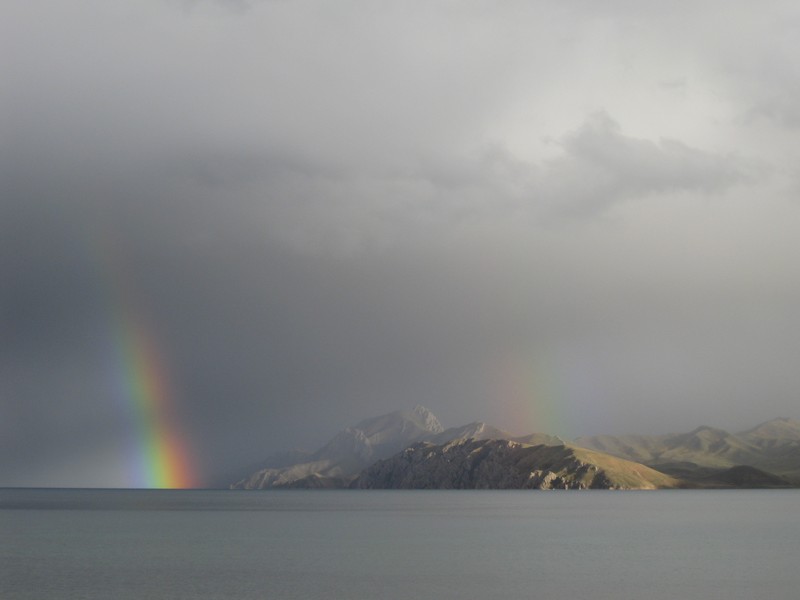
Double rainbow over a Tibetan Plateau lake by Janneke IJmker, distributed by EGU under a Creative Commons licence.
On 6 September 2009, monsoon clouds had built up throughout the day over the Donggi Cona lake in central China. Janneke IJmker, now a researcher at Deltares in the Netherlands, was doing fieldwork there as part of her PhD at RWTH Aachen University in Germany. By dinner time, the sun shone on raindrops from the clouds producing a magnificent double rainbow over the lake, which IJmker captured with her camera.“The photograph was taken during a fieldwork study of Holocene climate variations in the Donggi Cona lake catchment on the north-eastern Tibetan Plateau. Monsoon clouds and intense solar radiation resulted in this double rainbow, nicely demonstrating the reversal of colours in the secondary rainbow,” IJmker noted.
Secondary rainbows are the result of a double reflection of sunlight inside the water droplets. This second reflection causes the colours of the secondary rainbow to be inverted, with blue on the outside and red on the inside, compared to the primary.
Imaggeo is the online open access geosciences image repository of the European Geosciences Union. Every geoscientist who is an amateur photographer (but also other people) can submit their images to this repository. Being open access, it can be used by scientists for their presentations or publications as well as by the press. If you submit your images to imaggeo, you retain full rights of use, since they are licenced and distributed by EGU under a Creative Commons licence.

Bárbara Ferreira was the Media and Communications Manager of the European Geosciences Union from 2011 to 2019. Bárbara has also worked as a science writer specialising in astrophysics and space sciences, producing articles for the European Space Agency and others on a freelance basis. She has a PhD in astrophysics from the University of Cambridge.

